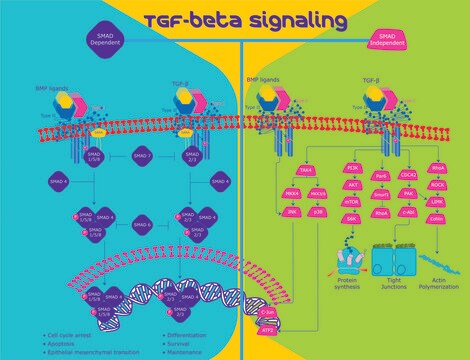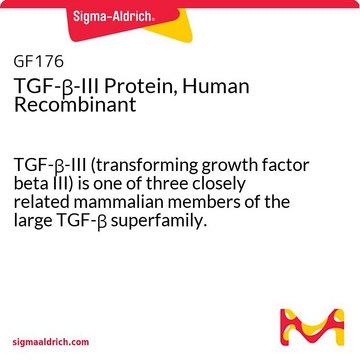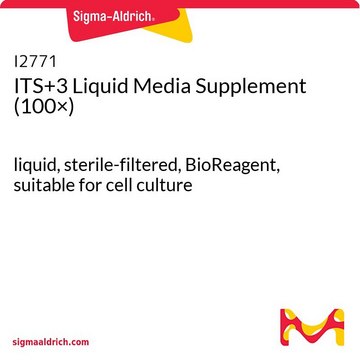T5425
Transforming Growth Factor-β3 human
≥97% (SDS-PAGE), recombinant, expressed in baculovirus infected Sf21 cells, powder, suitable for cell culture
Sinonimo/i:
hTGF-β3, TGF-β3
About This Item
Prodotti consigliati
Nome del prodotto
Transforming Growth Factor-β3 human, TGF-β3, recombinant, expressed in baculovirus infected Sf21 cells, powder, suitable for cell culture
Origine biologica
human
Livello qualitativo
Ricombinante
expressed in baculovirus infected Sf21 cells
Saggio
≥97% (SDS-PAGE)
Stato
powder
Potenza
0.01-0.09 ng/mL ED50/EC50
Qualità
endotoxin tested
PM
predicted mol wt ~25 kDa
Confezionamento
pkg of 2 μg
Condizioni di stoccaggio
avoid repeated freeze/thaw cycles
tecniche
cell culture | mammalian: suitable
Impurezze
<0.01 EU/μg
N° accesso UniProt
Temperatura di conservazione
−20°C
Informazioni sul gene
human ... TGFB3(7043)
Cerchi prodotti simili? Visita Guida al confronto tra prodotti
Descrizione generale
Applicazioni
Azioni biochim/fisiol
Stato fisico
Risultati analitici
Codice della classe di stoccaggio
11 - Combustible Solids
Classe di pericolosità dell'acqua (WGK)
WGK 3
Punto d’infiammabilità (°F)
Not applicable
Punto d’infiammabilità (°C)
Not applicable
Dispositivi di protezione individuale
Eyeshields, Gloves, type N95 (US)
Scegli una delle versioni più recenti:
Certificati d'analisi (COA)
Non trovi la versione di tuo interesse?
Se hai bisogno di una versione specifica, puoi cercare il certificato tramite il numero di lotto.
Possiedi già questo prodotto?
I documenti relativi ai prodotti acquistati recentemente sono disponibili nell’Archivio dei documenti.
I clienti hanno visto anche
Il team dei nostri ricercatori vanta grande esperienza in tutte le aree della ricerca quali Life Science, scienza dei materiali, sintesi chimica, cromatografia, discipline analitiche, ecc..
Contatta l'Assistenza Tecnica.









